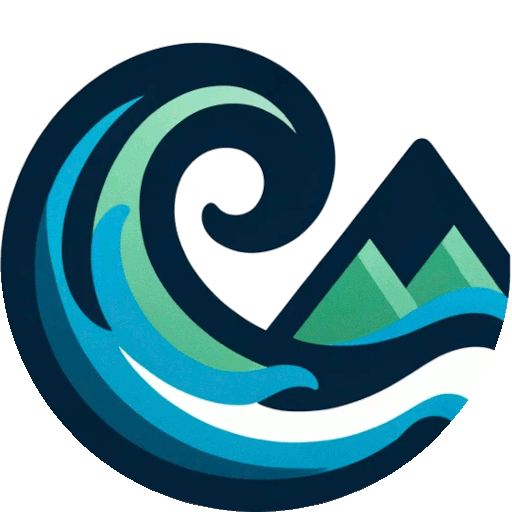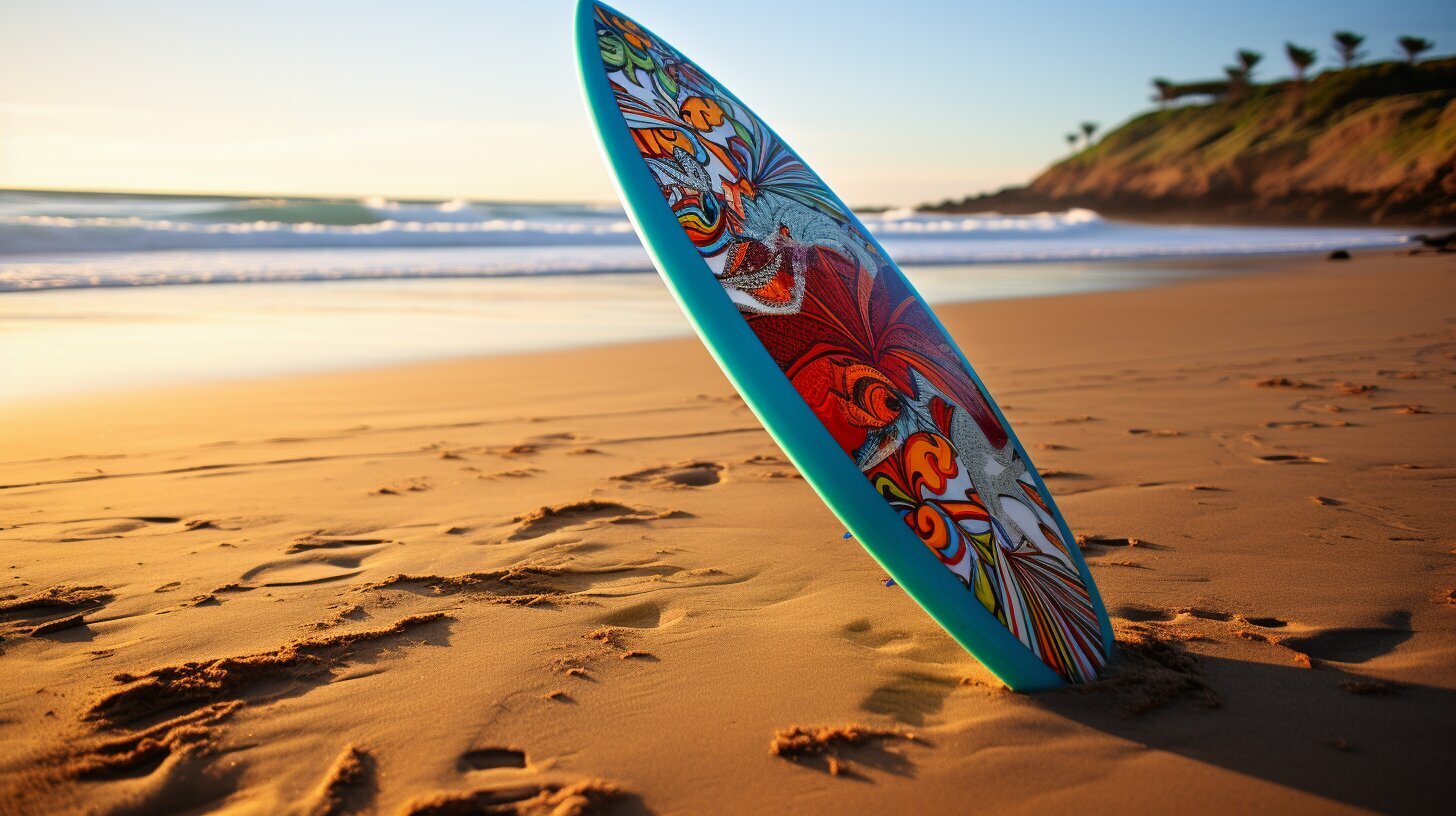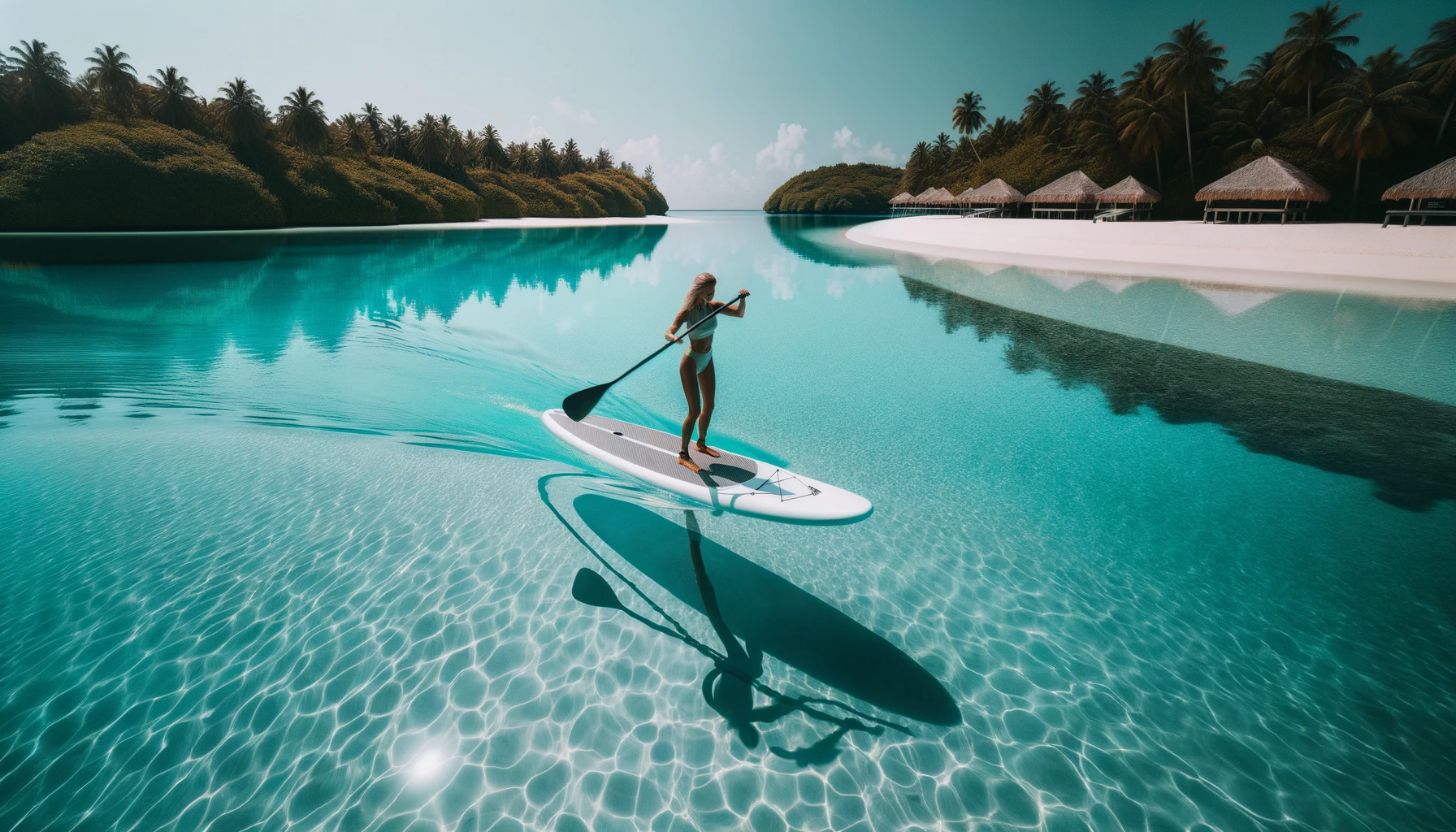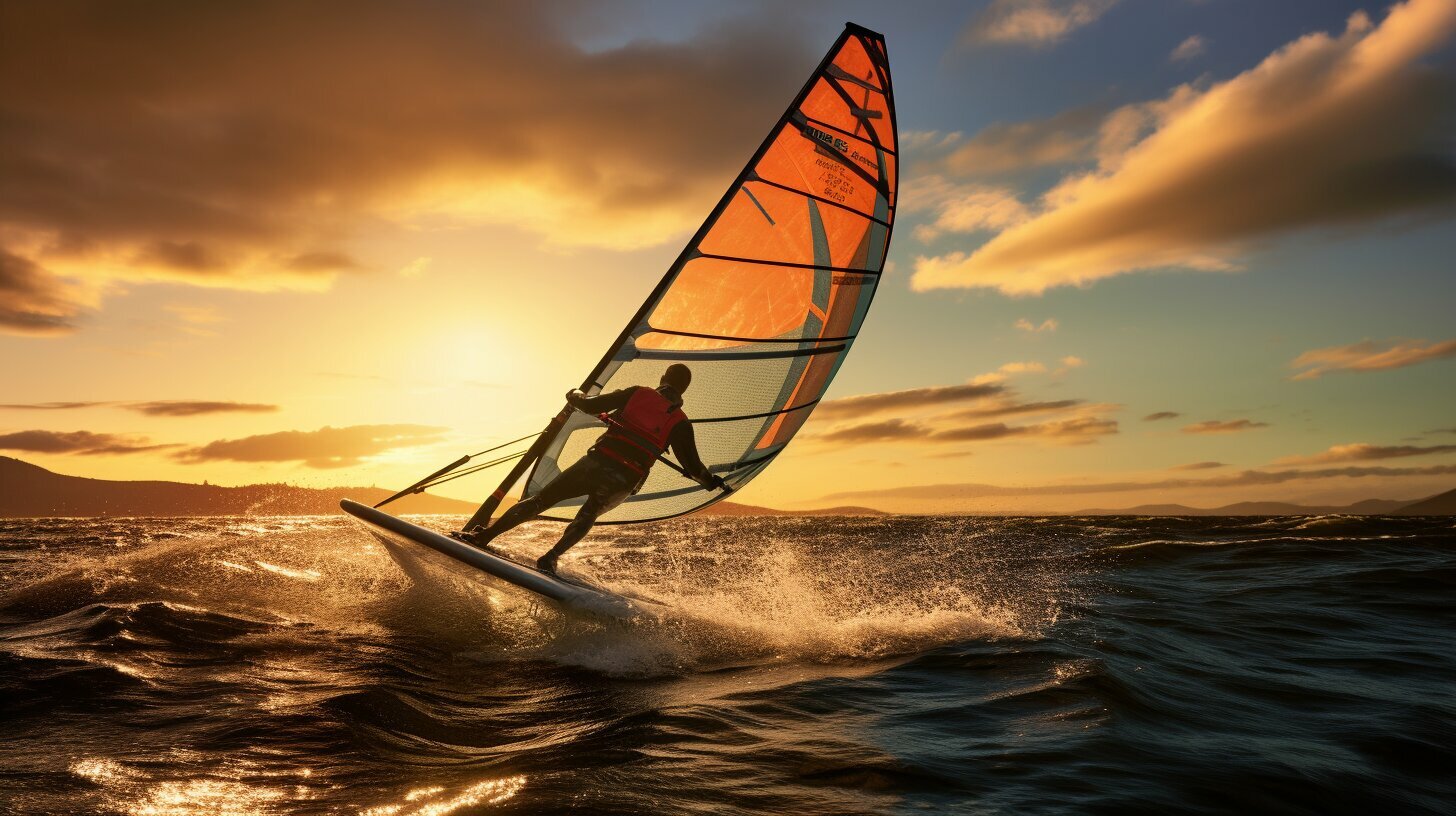Surfing is an exhilarating sport that requires the right equipment, and the most important piece of equipment is the surfboard. Choosing the right surfboard can make the difference between a frustrating experience and the ride of your life. If you are new to surfing, the process can be overwhelming, but don’t worry. This guide will help you navigate the surfboard buying process and ensure you choose the best surfboard for your needs.
Whether you are a beginner or an experienced surfer, finding the right surfboard can improve your skills and enhance your surfing experience. With so many surfboards on the market, it can be challenging to know where to start. This guide will walk you through the process of choosing the perfect surfboard for your skill level and the type of waves you want to ride.
Key Takeaways
- Choosing the right surfboard is crucial for a positive surfing experience.
- Consider your skill level and the type of waves you want to ride when selecting a surfboard.
- Factors such as weight, height, and wave conditions should be taken into account when choosing a surfboard.
- Trying out a surfboard before purchasing is highly recommended.
- Maintaining and caring for your surfboard will ensure its longevity.
- Find a reputable surf shop with knowledgeable staff and good customer service to purchase your surfboard.
Understanding Your Skill Level
When choosing a surfboard, it’s important to consider your skill level. Surfboards are designed with different shapes and sizes to cater to different skill levels and wave conditions.
If you’re a beginner, it’s recommended to start with a surfboard that has a larger volume and a wide, stable shape. These types of surfboards are easier to paddle and balance on, making it easier to catch waves and improve your skills. Look for a surfboard that is specifically marketed as the best surfboard for beginners.
Disclosure: When you buy through links on our site, we may earn an affiliate commission.
Intermediate surfers can start to experiment with different surfboard shapes and sizes. You may want to try a smaller board with less volume to increase speed and maneuverability. However, it’s still important to choose a surfboard that matches your skill level, as a board that is too advanced can hinder your progress.
Advanced surfers can choose from a wide range of surfboards based on their individual preferences and the wave conditions they plan to surf in. More experienced surfers typically prefer shorter boards that allow for quick, sharp turns and more advanced maneuvers.
Remember, choosing the right surfboard can make all the difference in your surfing experience. Take your time and consider your skill level when selecting a surfboard.

Types of Surfboards
Choosing the right surfboard is pivotal to your surfing success. With so many types of surfboards available, it can be challenging to determine which kind is best suited to your needs. Here is an overview of the primary types.
Shortboard
The shortboard is the go-to surfboard for experienced surfers, providing maximum maneuverability. It is typically less than seven feet long and ideal for fast and steep waves. Shortboards are not recommended for beginners, as they are challenging to paddle and require precise turning and positioning.
Longboard
The longboard is an excellent choice for beginners, as it provides stability, buoyancy, and easy wave-catching. It is typically over nine feet long and has a rounded nose and tail. Longboards are slower and less maneuverable than shortboards but are perfect for small, slow waves.
Fish Surfboard
The fish surfboard is a shortboard with a wider tail and a flatter rocker, providing stability and speed in small to medium-sized waves. The shape of the board resembles a fish, hence the name. Fish surfboards are excellent for intermediate surfers who enjoy faster waves.
Funboard
The funboard is a hybrid of the longboard and shortboard, providing a balance of stability and maneuverability. It is typically between seven and eight feet long and ideal for small to moderate waves. Funboards are a great option for beginners and experienced surfers who want a more versatile surfboard.
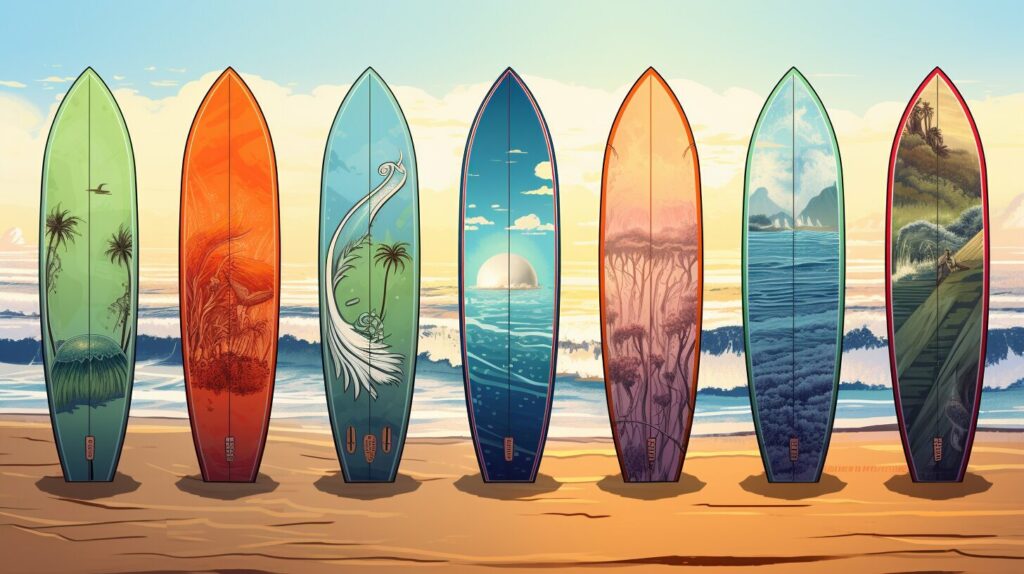
Each type of surfboard is designed for specific wave conditions and skill levels. Choosing the right surfboard can make all the difference in your surfing experience. Consider your skill level, wave conditions, and personal preferences before making a purchase.
Factors to Consider When Choosing a Surfboard
Choosing the right surfboard can make all the difference in your surfing experience. When selecting a surfboard, there are several factors to consider that can affect your performance in the waves. Keep these key points in mind when determining what size surfboard you should get, as well as its length, width, and volume:
| Factor | Importance | Guidance |
|---|---|---|
| Your weight | High | Choose a surfboard that can support your weight without sinking. Surfboard volume calculator tools can be helpful for calculating the appropriate volume based on your weight. |
| Your height | High | Consider your height when selecting the length of your surfboard. In general, taller surfers may need longer boards to achieve the same stability as shorter surfers. |
| Wave conditions | High | The type of waves that you will be surfing can affect the shape, size, and fin setup of your surfboard. Shortboards are ideal for steep waves, while longboards are better for smaller or slower waves. Fish surfboards are great for fast and hollow waves, and funboards can handle a variety of conditions. |
| Your skill level | High | Choosing the right surfboard for your skill level is crucial. Beginners may benefit from longer and wider boards with more volume, while intermediate and advanced surfers may prefer shorter boards with less volume for greater maneuverability. |
Keep in mind that these are general guidelines, and ultimately, your own preferences and experience will dictate what surfboard works best for you. Don’t hesitate to seek advice from surf shop experts, as they can provide additional guidance based on your individual needs.
When determining what size surfboard you should get, it’s important to consider the length, width, and thickness of the board. In general, longer boards provide greater stability and buoyancy, while shorter boards offer increased maneuverability. Wider boards offer more stability and are good for beginners, while narrower boards are better for advanced surfers.
Once you’ve chosen a surfboard size and shape that works for you, don’t forget to consider the fins. The number, size, and placement of fins can have a significant impact on the performance of your surfboard. Single fins are good for stability and control, while multi-fin setups like thrusters and quads offer greater speed and maneuverability.
Use this surfboard size chart as a general guide for finding the right board based on your weight and skill level. Remember, the right surfboard for you may vary depending on the wave conditions and your personal preferences.
Surfboard Shapes and Designs
Surfboard shapes and designs play a significant role in how a surfboard performs in different wave conditions. Understanding the various shapes and designs can help you choose the right surfboard that matches your surfing style and skill level. Here’s a surfboard shape guide to help you navigate the options.
Pintail: The pintail design is a popular choice among experienced surfers who want a board that can handle steeper waves. Its narrow tail reduces drag, allowing for faster speeds and sharper turns.
Squash Tail: The squash tail design is a versatile choice suitable for a wide range of wave conditions. Its wider tail provides stability and generates speed, making it great for catching smaller waves.
Swallowtail: The swallowtail design is another option for intermediate to advanced surfers who enjoy riding larger waves. Its two split tails increase maneuverability, allowing for tighter turns and greater control.
Other surfboard shapes and designs include the diamond tail, round tail, and bat tail. Each design offers unique advantages depending on the wave conditions and the surfer’s skill level.
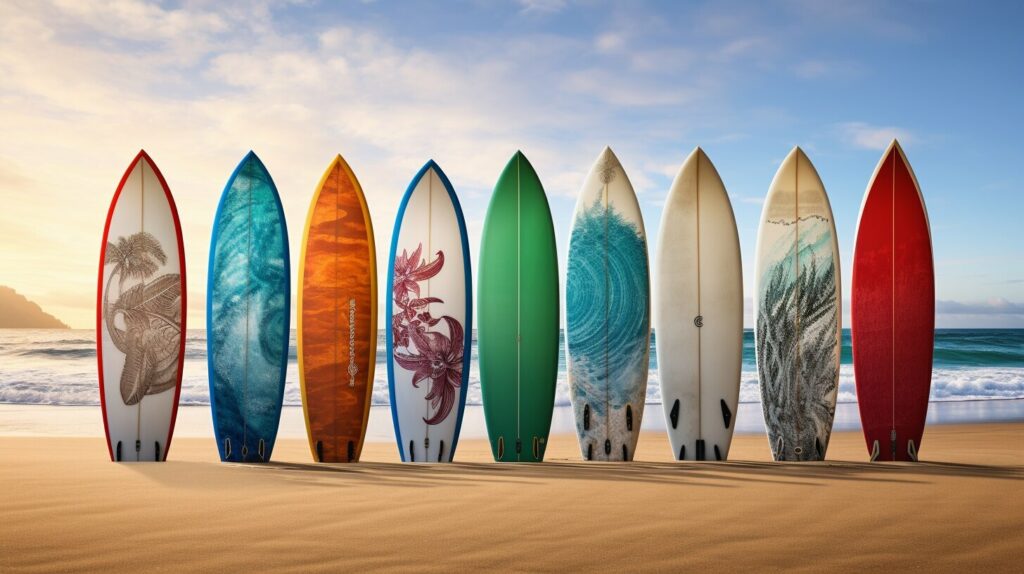
When choosing a surfboard shape and design, consider your surfing style, skill level, and the wave conditions you’ll be surfing in. If you’re unsure, speak with a knowledgeable surf shop staff member who can guide you in the right direction.
Choosing the Right Fins
Choosing the right fins is crucial to optimize the performance of your surfboard. The right fins can improve stability, speed, and maneuverability, while the wrong fins can ruin the surfing experience.
The three most common fin setups are the single fin, thruster, and quad. The single fin setup is ideal for longboards and retro-style surfboards and provides more stability and control. The thruster setup, which features three fins, is the most common configuration and provides a balance of speed, control, and maneuverability. The quad setup, which has four fins, provides more speed and a looser feel, making it ideal for smaller waves.
If you’re unsure which fin setup to choose, try experimenting with different fins to find your preferred setup. Keep in mind that the size and shape of the fins also play a significant role in the performance of the surfboard. Larger fins provide more stability and control, while smaller fins allow for more maneuverability.
| Fin Setup | Pros | Cons |
|---|---|---|
| Single Fin | Provides stability and control | Less maneuverable |
| Thruster (3 fins) | Balance of speed, control, and maneuverability | May feel stiff or slow in certain surf conditions |
| Quad (4 fins) | Provides more speed and a looser feel | Less stable and harder to control |
When choosing fins, consider your skill level, preferred surfing style, and wave conditions. Ask for advice from local surf shops or experienced surfers who have a similar style to yours.
Tip: Some surfboards come with fins included, while others require you to purchase them separately.
Trying Before Buying
When it comes to buying a surfboard, it’s important to remember that one size does not fit all. Even if you’ve done your research and found a surfboard that seems like the perfect fit for your needs and skill level, it’s always a good idea to try it out before making a purchase.
Renting a surfboard from a local surf shop is a great way to test out different types and sizes of surfboards in various wave conditions. This will give you a better idea of what you’re looking for and help you make a more informed decision.
Additionally, many surf shops offer demo days where you can try out a variety of surfboards for free. These events are a great opportunity to ask questions and get advice from knowledgeable staff members who can help you find the right surfboard for your needs.
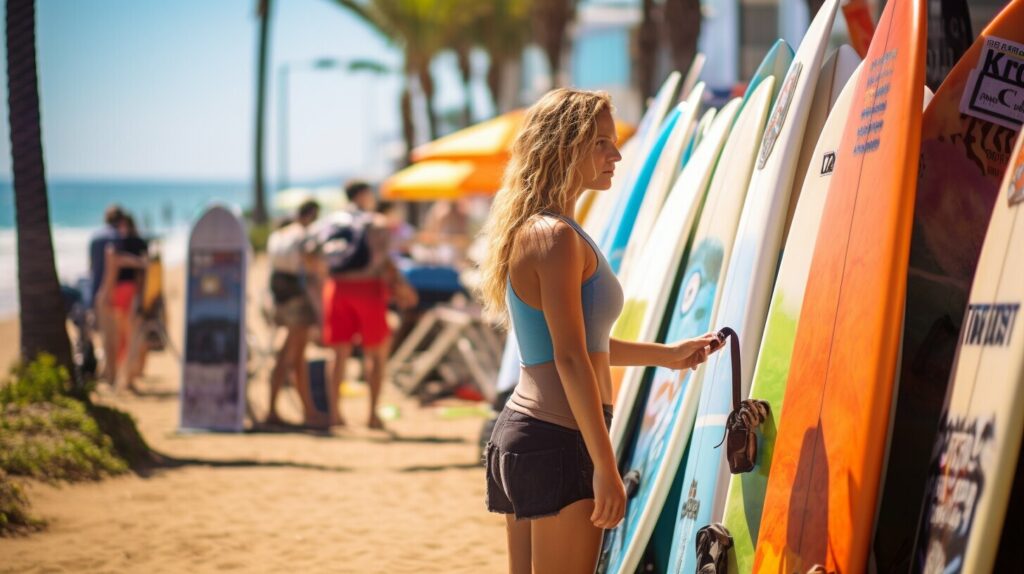
“Even if you’ve done your research and found a surfboard that seems like the perfect fit for your needs and skill level, it’s always a good idea to try it out before making a purchase.”
Remember, the right surfboard can make all the difference in your surfing experience. Taking the time to try out different surfboards before making a purchase is well worth the investment and can help ensure that you find a board that you’ll love for years to come.
Maintenance and Care
Once you’ve invested in a surfboard, it’s crucial to maintain and care for it properly to ensure its longevity and optimal performance. Here are some tips to help you keep your surfboard in top condition:
| Maintenance Task | Frequency |
|---|---|
| Rinse with freshwater | After each use |
| Remove wax buildup | As needed |
| Repair dings | As soon as possible |
| Store in a cool, dry place | When not in use |
It’s essential to rinse your surfboard with freshwater after every use to remove any salt, sand, or debris that may have accumulated on it. This will prevent corrosion and keep your surfboard clean.
Over time, wax buildup can affect the performance of your surfboard. Be sure to remove any excess wax with a wax comb or scraper as needed.
Dings and cracks can occur while surfing, so it’s crucial to repair them as soon as possible to prevent water from seeping into the foam core. You can easily repair small dings yourself using a ding repair kit, but larger repairs may require professional assistance.
Finally, store your surfboard in a cool, dry place when not in use to prevent damage from sunlight, temperature changes, and moisture.
By following these maintenance and care tips, you can prolong the life of your surfboard and ensure that it performs at its best.
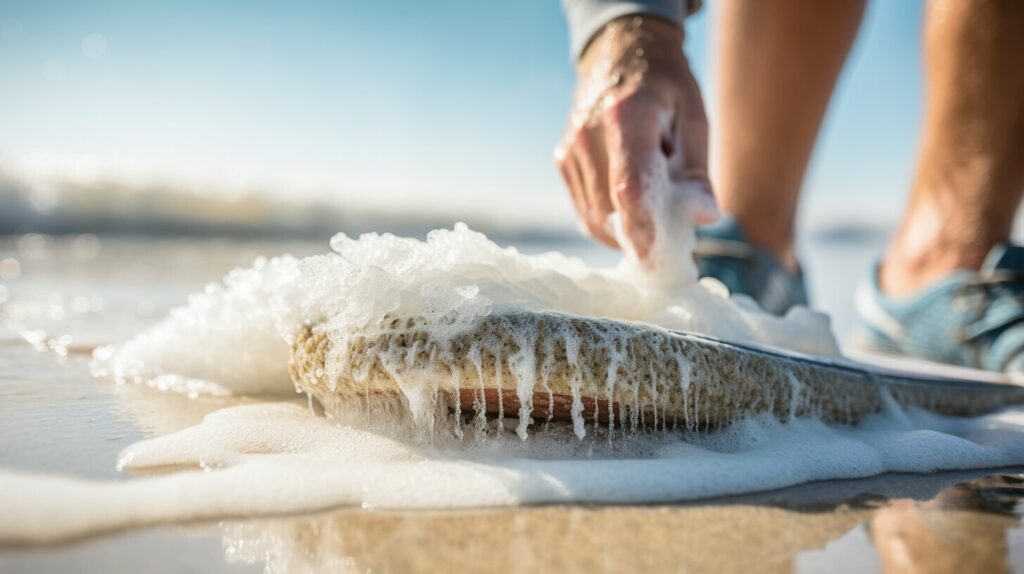
Finding the Right Surf Shop
When it comes to buying a surfboard, finding the right surf shop is crucial. A knowledgeable and reliable staff can help you navigate the wide selection of surfboards available and choose the one that’s right for you. Here are some tips to help you find the perfect surf shop:
- Research surf shops in your area: A quick online search can help you identify some of the top surf shops in your area. Check out their websites and social media pages to get an idea of the types of surfboards they carry and the services they offer.
- Read reviews: Reviews from other surfers can offer valuable insight into a surf shop’s reputation and customer service. Look for surf shops with high ratings and positive feedback from customers.
- Visit the surf shop in person: Once you’ve identified a few potential surf shops, take some time to visit them in person. This will give you the opportunity to speak with staff members, check out their selection of surfboards, and get a feel for their overall vibe.
- Ask for recommendations: Don’t be afraid to ask for recommendations from fellow surfers or the surf shop staff. They may be able to recommend a surfboard that suits your needs and skill level.
Remember, a good surf shop should offer more than just surfboards. Look for a shop that provides services such as surfboard rentals, repairs, and maintenance. They should also be able to offer advice on surfboard selection and provide guidance on choosing the right fins and surfboard accessories. Keep these tips in mind when searching for the perfect surf shop, and you’ll be sure to find a surfboard that will take your surfing to the next level.
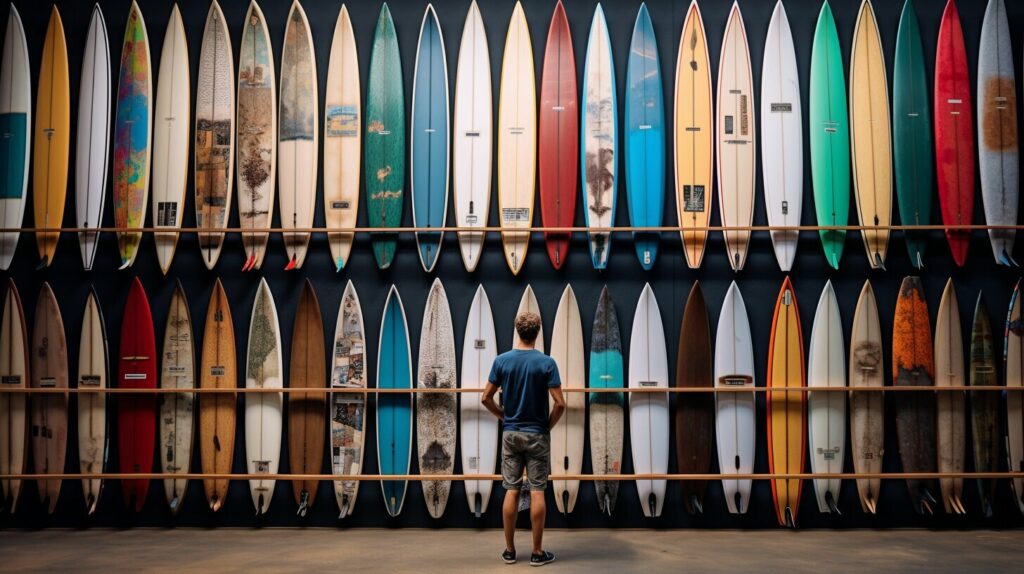
Conclusion
Choosing the right surfboard can make a huge difference in your surfing experience. By considering your skill level, preferred wave conditions, and body type, you can narrow down the types of surfboards that will work best for you. Remember to try before you buy and take advantage of the surfboard rental options available at local surf shops. When maintaining your surfboard, always follow proper care procedures and seek expert advice when needed.
Now that you have read this ultimate guide on how to choose a surfboard, you should feel confident in your ability to select the right surfboard for you. Whether you are a beginner or an advanced surfer, the perfect surfboard is out there waiting for you. So get out there, catch some waves, and enjoy the ride!
FAQ
Q: How important is it to choose the right surfboard?
A: Choosing the right surfboard is crucial as it directly impacts your surfing experience. The right surfboard can enhance your performance and make surfing more enjoyable.
Q: How should I determine my skill level when choosing a surfboard?
A: It is important to assess your current skill level honestly. If you are a beginner, opt for a surfboard that provides stability and buoyancy. Intermediate and advanced surfers can choose surfboards based on their specific preferences and riding style.
Q: What are the different types of surfboards available?
A: There are various types of surfboards, including shortboards, longboards, fish surfboards, and funboards. Each type has its own characteristics and is suited for different wave conditions.
Q: What factors should I consider when choosing a surfboard?
A: Factors such as your weight, height, skill level, and preferred wave conditions should be taken into account. Surfboard length, width, and volume calculations are also important factors to consider.
Q: How do different surfboard shapes and designs affect performance?
A: Surfboard shapes and designs, such as pintail, squash tail, and swallowtail, impact the board’s maneuverability and performance in different wave conditions. Understanding these design elements can help you choose the right surfboard for your needs.
Q: How important is selecting the right fins for a surfboard?
A: Choosing the right fins is essential as they determine the stability and maneuverability of the surfboard. Different fin setups, such as single fin, thruster, and quad, offer different riding experiences.
Q: Should I try out a surfboard before buying?
A: Yes, it is highly recommended to try out a surfboard before making a purchase. Renting or borrowing surfboards allows you to test them out in various wave conditions to ensure they meet your expectations.
Q: What are some maintenance tips for surfboards?
A: To maintain your surfboard’s longevity, make sure to regularly wax it, repair any dings promptly, and store it properly when not in use. Following these maintenance tips will extend the lifespan of your surfboard.
Q: How do I find a reputable surf shop to purchase a surfboard?
A: Look for surf shops with knowledgeable staff, a wide selection of surfboards, and good customer service. Reading reviews and seeking recommendations from fellow surfers can also help you find the right surf shop.
